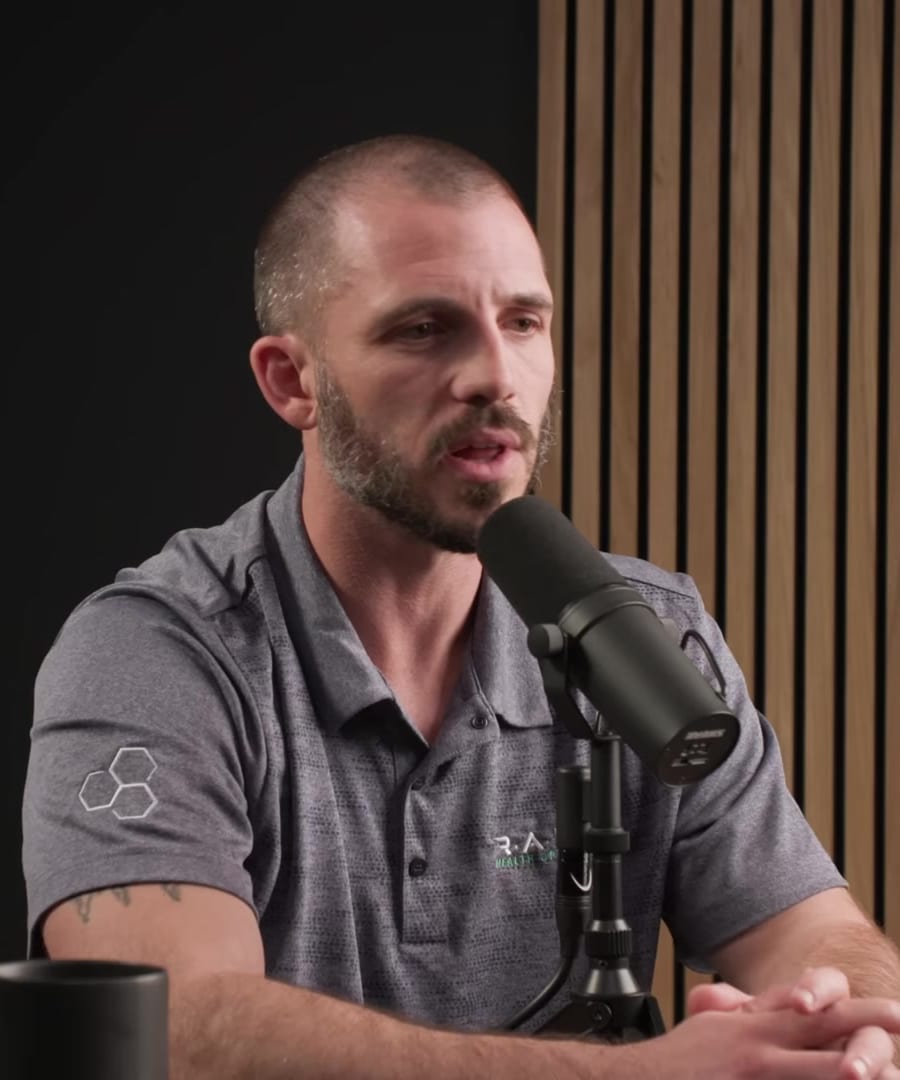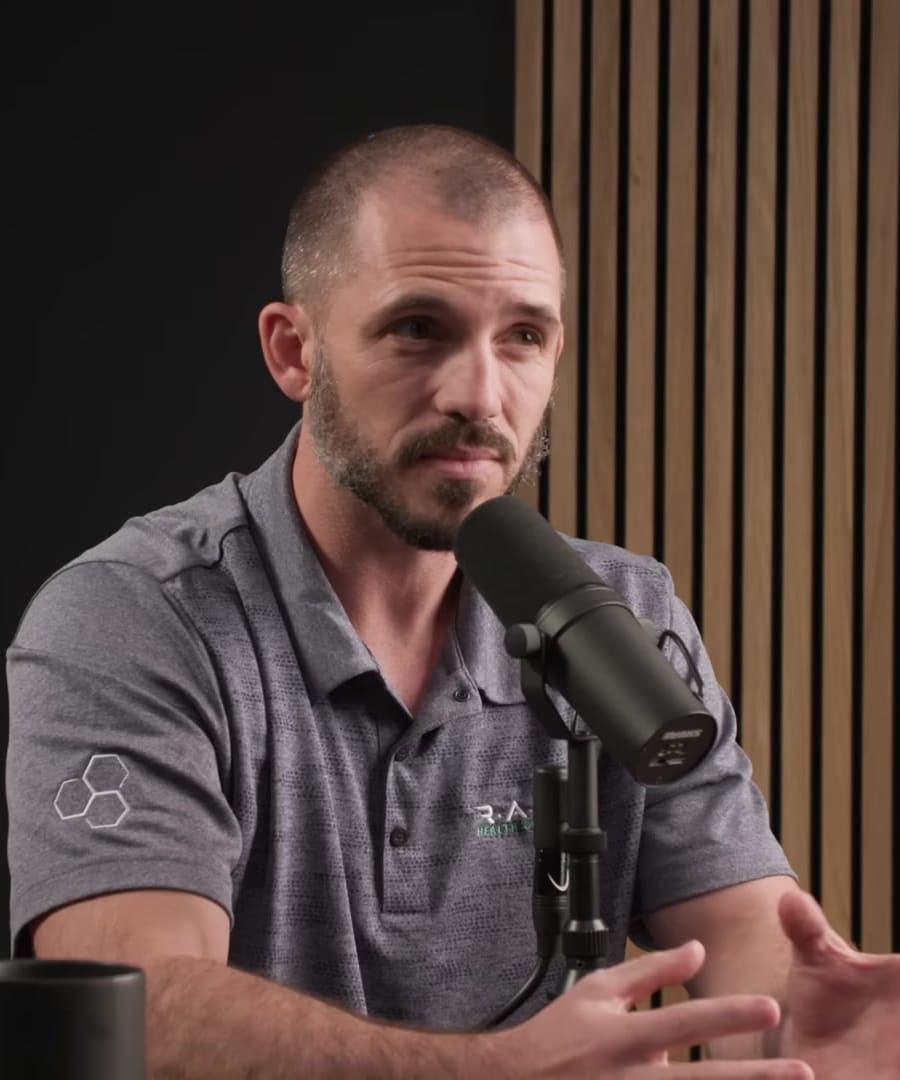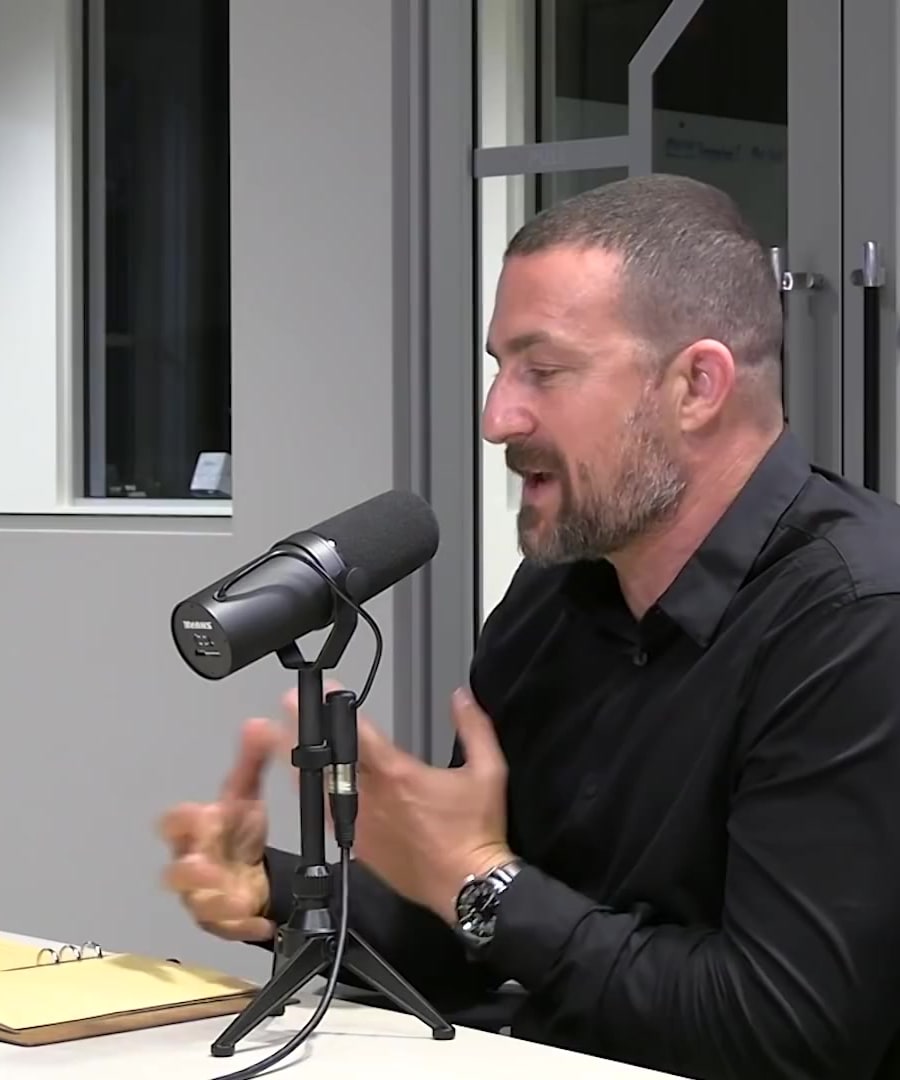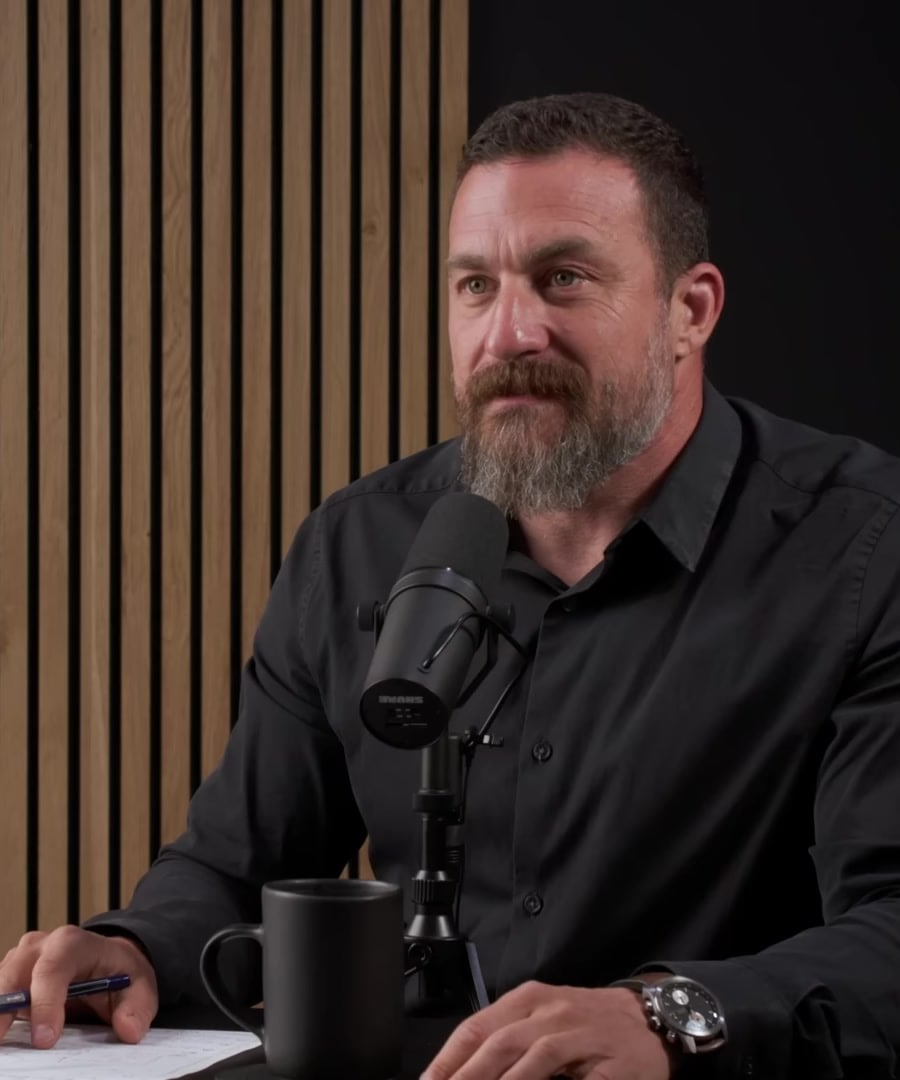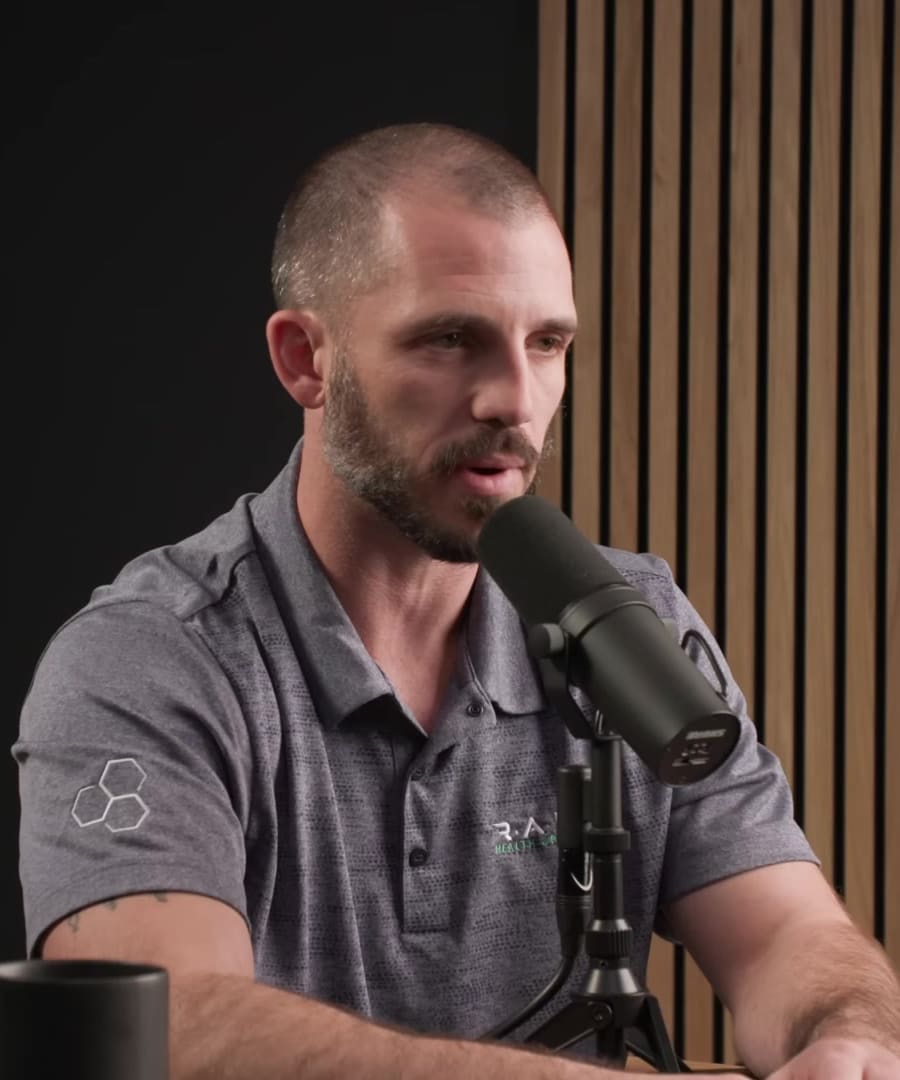Calculating protein requirements
Sources:
In order to support muscle growth and repair, it's important to ingest essential amino acids, particularly leucine. suggests consuming between 700 to 3000 milligrams of leucine with each meal. This does not necessarily mean using supplements; it is often recommended to get these amino acids from whole foods.
When it comes to protein density, animal proteins (e.g., steak, chicken, fish, or eggs) typically have a higher density of essential amino acids per calorie compared to plant-based sources like nuts or beans. Vegans and vegetarians can still support muscle growth, potentially with leucine supplementation if needed.
Regarding meal frequency, it's a misconception that you need to eat six or seven times a day to support muscle performance. Somewhere between eating once and six times a day is better, with two to four meals a day being reasonable for most people. These meals should include sufficient amino acids in line with one's ethical and nutritional practices 1.
RELATED QUESTIONSHow do I calculate my daily protein intake?
Sources:
Calculating daily protein intake isn't specifically detailed by ; however, he and his guests often discuss the importance of protein in the diet. For instance, it is generally recommended to consume whole foods for protein intake and to include enough protein in the diet to meet individual needs, which can be influenced by factors like body weight, activity level, and specific goals. In a conversation with , the idea of not calorie counting but being aware of protein intake (e.g., 30 grams of protein in the morning) is mentioned. Whole food sources are recommended over powders for better satiety and health benefits. This can be self-limiting, meaning when consuming enough fiber and protein, it's less likely you will over-consume calories 1.
For an accurate daily protein intake calculation, it's typically suggested to estimate based on body weight and activity level. A common recommendation is to consume between 0.8 to 2.2 grams of protein per kilogram of body weight, with the higher end being for those who are very active, especially in strength training. It is important to adjust this general guideline based on personal dietary preferences, health goals, and any advice from nutrition experts.
RELATED QUESTIONSUse a protein intake calculator tool
and the do not appear to have specifically discussed the use of a protein intake calculator tool based on the available data. For personalized advice on protein intake, consulting a healthcare provider or a registered dietitian is typically recommended to account for individual health conditions, dietary restrictions, and specific fitness goals.
RELATED QUESTIONSIntermittent fasting
Sources:
Intermittent fasting involves restricting one's eating to a certain time window within the 24-hour cycle, which can lead to various health benefits. discussed improvements in liver enzymes, insulin sensitivity, gut microbiome, and potentially increased lifespan associated with intermittent fasting practices 1 2 3. He also noted the importance of not eating for at least 60 minutes after waking up and avoiding any food intake for 2-3 hours before bedtime to maximize the health benefits of time-restricted fasting 4.
, another expert in the field, provided insights on the history and benefits of this dietary approach, including its potential for preventing age-related diseases and improving longevity 5.
For a practical and healthful intermittent fasting regimen, a feeding window could start around 10:00 AM or noon and conclude by 6 or 8:00 PM, aligning with social rhythms in most cultures and improving adherence to the fasting schedule 6.
Ultimately, the overall number of calories consumed and the quality of food sources are the most important variables, but many find intermittent fasting a convenient way to control calorie intake 7. It's important to consult with a healthcare provider before starting any fasting regimen, especially for those with specific health conditions.
RELATED QUESTIONSIngesting 30 g of protein when waking while intermittently fasting
Sources:
and discuss the concept of consuming 30 grams of protein within 30 minutes of waking up, especially in the context of the slow carb diet. Dr. Huberman mentions that based on his experience, this practice can contribute to a decrease in body fat percentage and an increase in muscle mass. However, he also points out the potential conflict this might have with intermittent fasting, where one typically would not eat until later in the morning 1.
In another episode, Dr. Huberman elaborates on the importance of ingesting protein early in the day for muscle maintenance and hypertrophy. He cites studies that suggest eating protein early in the day supports muscle tissue maintenance and growth and mentions that optimal times for protein intake, in this case, would be before 10:00 AM, particularly for those interested in muscle hypertrophy or maintenance. Still, it's crucial to avoid eating in the first 60 minutes after waking if you're interested in the benefits of intermittent fasting 2 3.
If your goal aligns with muscle hypertrophy and you also wish to adhere to intermittent fasting, you might have to adjust your fasting window to incorporate protein intake early in the day while still respecting the guideline of no food intake for the first hour post-waking 3.
Remember to consult with a healthcare professional before making significant changes to your diet, especially when combining practices like high protein intake upon waking with intermittent fasting.
RELATED QUESTIONSCarb intake
Sources:
Regarding carbohydrate intake, there is a range of advice and perspectives provided by guests and hosts on the .
- emphasizes the importance of carbohydrate intake in relation to one's level of physical activity. For high energy expenditure workouts, he suggests consuming about half a gram of carbohydrate per pound of body weight, adjusting this amount based on workout intensity. This approach ensures adequate fueling for the workout and recovery 1.
- also advises against ingesting fast carbohydrates before exercise due to the risk of blood sugar crashing, known as the insulin glucose double whammy, and highlights the importance of practicing competition eating strategies during training 2.
- In the context of the slow carb diet discussed by and , the focus is on simple rules like avoiding caloric drinks and white-colored foods, primarily starches, and ensuring a significant protein intake within 30 minutes of waking up. This diet works for many people, particularly for body recomposition 3.
- also talks about the need to adjust fuel sources used for exercise based on the body’s ability to utilize fat and carbohydrates effectively. Understanding these fuel source utilizations allows for better preparation and adaptation for physical activities 4.
- If one’s dietary style changes or a specific goal is in mind, and suggest adopting a needs-based eating approach, modifying carbohydrate intake in line with the volume and type of physical activity being undertaken 5.
- Dr. also shares his personal approach to his diet: fasting or eating low-carb during the day to stay alert, then incorporating carbohydrates in the evening for better sleep 6.
These perspectives highlight how carbohydrate intake can be tailored to individual activity levels, goals, and dietary preferences. It's always important to consult with a healthcare professional before making significant changes to one's diet.
RELATED QUESTIONSEndomorph
Sources:
I was unable to find specific discussions on the endomorph body type in the database. However, body phenotype discussions, in general, do touch on aspects that may be pertinent to endomorphs, such as adjusting exercise and diet to one's individual needs 1 2. It's important to consult with healthcare and fitness professionals to design a regimen suitable for any specific body type or fitness goal.
RELATED QUESTIONSBody phenotypes
Sources:
Discussions on the have touched on topics related to body phenotypes, which refer to the observable characteristics or expressions of an individual's genetic makeup. These characteristics can influence how different people respond to exercise, stress, and other factors. Several points highlighted in the podcast include:
-
Exercise Adaptation Based on Body Phenotype: The recommendation of combining cardio with resistance training can be particularly beneficial, but individual needs can vary depending on factors such as insulin production and glucose metabolism. This suggests that the amount and type of exercise should be personalized to fit the unique phenotype of an individual 1.
-
Impact of Phenotypes on Mental Well-being: Phenotypes can also describe typical behaviors or tendencies in response to mental health challenges, emphasizing the importance of understanding these patterns to tailor approaches for overcoming common problems like anxiety or feeling stuck 2.
-
Stress-Related Eating and Phenotypes: Stress can influence eating behavior and weight control, with different phenotypes having varied responses to stress. For instance, some people may lose weight during stress, while others tend to overeat. Understanding these stress-related phenotypes can help in addressing issues like binge eating or the inability to feel satiated 3.
Overall, these discussions underscore the importance of considering individual body phenotypes when approaching exercise routines, mental wellbeing strategies, and eating habits for optimal health and stress management.
RELATED QUESTIONS-
Could you explain what somatotypes are?
Sources:
Somatotypes are a concept that categorizes body types based on certain physical characteristics, such as body composition, muscle and fat distribution, and overall body shape. The idea was originally developed by American psychologist William Herbert Sheldon in the 1940s and includes three primary categories:
- Ectomorph: Characterized by a lean and long body with minimal muscle and fat. Ectomorphs often find it difficult to gain weight and might have a fast metabolism.
- Mesomorph: Associated with a muscular and well-built body, mesomorphs tend to have an easier time gaining muscle and maintaining a lean physique.
- Endomorph: Typically has a higher proportion of body fat, a rounder physique, and may struggle with maintaining a lean body composition.
It's important to note that these categories were part of a theory that also attempted to link body types to personality traits, an aspect that has been largely discredited in the scientific community. However, the physical descriptors of somatotypes remain in use, particularly in fitness and nutrition planning, to help tailor approaches for achieving health goals based on individual body composition tendencies.
While the concept of somatotypes can be relevant when talking about body phenotypes, as it relates to physical characteristics, the retrieved clip does not provide an explicit discussion on somatotypes. Instead, the clip focuses on how people tend to pair up based on their autonomic tone and emphasizes the importance of recognizing and respecting different categorizations and gaining control over one's autonomic nervous system to appreciate and empathize with others' experiences. This discussion is related to mate seeking and relationship dynamics, not somatotypes specifically 1.
RELATED QUESTIONSCarb cycling
Sources:
Carb cycling is a dietary approach where carbohydrate intake is varied on a daily, weekly, or monthly basis. It is typically used by athletes and bodybuilders to potentially optimize physical performance and achieve specific body composition goals like muscle gain and fat loss. This method involves altering the amount of carbohydrates consumed at different times to work in conjunction with the body's changing needs throughout a training cycle or even within a single day.
Unfortunately, the retrieved clips from the do not provide a direct discussion on carb cycling and its methodology or benefits. The clips retrieved instead discuss the slow carb diet, carbohydrate loading prior to endurance performance, protein and nutrient intake post-exercise and carbohydrate metabolism 1 2 3.
To learn more specifically about carb cycling as it pertains to recommendations from the Huberman Lab, a search for direct discussions on carb cycling within their episodes would be needed.
RELATED QUESTIONS
Calculating protein requirements
- RELATED QUESTIONS
How do I calculate my daily protein intake?
- RELATED QUESTIONS
Use a protein intake calculator tool
- RELATED QUESTIONS
Intermittent fasting
- RELATED QUESTIONS
Ingesting 30 g of protein when waking while intermittently fasting
- RELATED QUESTIONS
Carb intake
- RELATED QUESTIONS
Endomorph
- RELATED QUESTIONS
Body phenotypes
- RELATED QUESTIONS
Could you explain what somatotypes are?
- RELATED QUESTIONS
Carb cycling
- RELATED QUESTIONS













